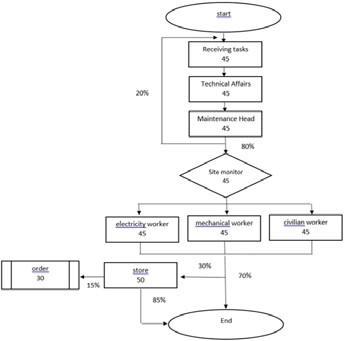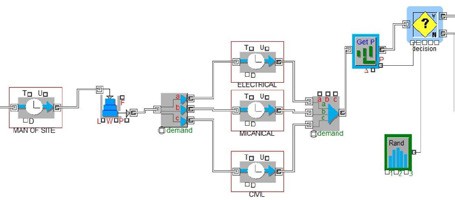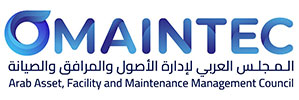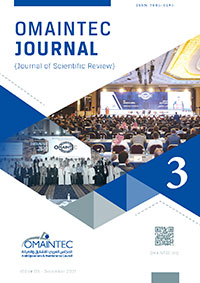Author: Eng.Khaled A Aldhufer
King Faisal University, Saudi Arabia kaaldhafar@gmail.com
Abstract #
Currently, the benefits of adopting and using building information Modeling (BIM) methodologies are still an issue that researchers have not fully explored in the design and construction phase. The cost associated with maintaining a structure is significantly huge, especially when a precise mechanism and methodology of care do not exist. On many occasions, the cost of maintenance is never taken into consideration during the design phase. Therefore, the research evaluates workers’ efficiency to reduce the time to complete maintenance requests and work for more outstanding quality- at King Faisal University housing projects in Saudi Arabia. The study will use building information modeling BIM and studying the areas of weakness in the Extend program. There will be a need to access frequently used information hubs such as material, equipment, supplier, and maintenance history information. Therefore, to facilitate the operations and maintenance, each statement will be embedded in the BIM model to help convey prompt feedback. The studying anticipates that adding two experts shall increase efficiency in identifying the problem, guiding workers, and making a digital program to follow up on requests. It is also expected to increase worker productivity and reduce the time to solve University Staff housing maintenance problems.
Keywords: The Efficiency Of Workers , Building Information Modeling , simulation,
1 Introduction #
The Kingdom of Saudi Arabia comprises one of the most robust construction sectors in the Middle East region. The rapidly growing construction industry results from increased domestic and public needs. The revenues generated from the oil industry benefited the construction industry. It was projected that the Saudi Arabian construction industry is expected to experience an accelerated growth rate for the next 10–15 years. An increase in the lifecycle of an installation calls for an increase in the build’s age. It is achieved by building maintenance such as painting, plumbing, repairs, and sanitation.
According to Addai (2017), facilities’ maintenance and management are the practical and organized maintenance system of established activities to handle problems associated with the building’s upkeep. However, building maintenance is not the industry’s priority (CAT, 2020).
Ensure that a building continues fulfilling its objectives while also appealing from its exterior is essential for maintaining the facility is a proposal by Sylva & Kulatunga (2018),
2 Literature review #
Taraniuk, Kobyzskyi & Thomson (2018) give a varied translation of various categories of maintaining and managing the building. Irrespective of this, each of them explains that the process with multiple operations like planning, plans for implementation, control, support, decision-making, and many more is essential for carrying out successful procedures. To create more efficient onsite labor workflows, construction firms must use a standard data-backed formula streamlining a necessary impact of the workflow they can consult across all projects (CAT, 2020). The term manages and supervises an activity based on the owner’s objectives, strategy, and economic principles (Lucas 2016). When analyzing various scientific-related articles from varied periods, Bhaskar (2016) noted that it is easy to identify development trends and the functions linked with a process. Management needs to review modulation techniques quicker and more efficiently, allowing individual elements to be constructed onsite.
Building maintenance is work to keep, restore, or improve each building section. It consists of maintaining the building performance fabrics, services, and surroundings to accommodate the building’s standards and sustenance of utility and value. The second purpose is to ensure that facilities are fit for utilization. The third purpose is to provide the fulfillment of the requirements based on the statutory needs. Another goal is to ensure the maintenance of the necessary work to preserve the assets’ physical value, while the fifth purpose is to provide the supervision of the building’s quality.
Building maintenance and management usually share a relationship with innovative strategy and future sustainability (Lucas, 2016). Various work methodologies are incorporated when it comes to the performance of building maintenance and its management. According to Lucas (2016), two things are involved: managing the assets and building maintenance management. Cost evaluation of all aspects and the allocation of budget to attain their respective activities’ success. Construction industry productivity rates rise when companies do not have to manage everything onsite; they must consider which construction components can be put together beforehand, fabricated in outsourced factories, and then transported to the build (CAT, 2020). Interior maintenance is keeping the internal sections of the building secure, pleasant, and usable. Factors like surfaces plus the finishing, windows, and doors, fixing of equipment, fire safety must be considered. Bhaskar (2016) identified preventive maintenance and stressed its vital roles. Hence, the best practices associated with preventative maintenance suggested are quite broad. Consequently, the second case is building the capabilities for ranking the
maintenance projects and evaluating their respective costs (Bozorgi, Gao, Eastman & Self, 2018). An essential part of this framework is equipment management administration, which closely monitors the data generated from machine-installed software; it frees site supervisors to focus on the business and the overall operation (CAT, 2020).
2.1 Building Management Systems and Economics
Renovation and maintenance can be evaluated scientifically. The technique of arriving at decisions needs to be done to guarantee the house’s normal functioning for its longevity. The idea behind the best housing maintenance cycle is characterized by its maintainability and defines repair and renewal state. They suggested a system of management regarding the safety of the building then highlighted in the paper. Therefore, the system entails several aspects: regulating the industry of government, laws linked with the building’s management, and departmental leadership. Others include the technical specifications for regular evaluation of facilities, technical design standards, construction and maintenance of information systems on the building, measures linked with the emergency, and internet or intranet. It is also essential to include outstanding education on the building’s safety, technical decision making, coupled with managing the facility. Lastly, project management software helps managers sequentially design, prepare and do onsite tasks, schedule daily tasks, and activities into appropriate project phases (CAT, 2020).
In their research in this field, it was established that often the planned preventive maintenance had high failure rates because of the poor management of information(Bozorgi, Gao, Eastman & Self (2018) and Pishdad-Bozorgi, Gao, Eastman & Self (2018). Management controls like budgeting, programming, costing, and reporting are challenges in implementing the contract’s selection, procurement, and varied aspects of service contracts and agreements.
Housing maintenance and paying attention to buildings repairs have recently employed three- dimensional modeling. Information management for building maintenance depends on action planning considered and the finalized work. The 3D model associated with the database connected with care creates a virtual environment that can be manipulated by parties with interest in consultation, creation, transformation, and evaluation of data to obtain results and arrive at decisions. 3D use is considered the main breakthrough towards the closure of the gap between the client’s needs and what is seen by the designer as those constituting the client’s needs.
Lastly, the use of BIM is one of the most significant breakthroughs in the construction sector. The tool can reduce rework by bringing high to a very high value to the project.
Consequently, Architects have recommended the software because it improves productivity, as seen in their technology investment return. BIM significantly reduces conflicts in performing a task and when a change of design is necessary (Fadeyi, 2017). Besides, BIM provides pre-
programmed portrayals of how a construction project should look across its entire lifecycle and provides a resource to check and follow a project’s given schedule (CAT, 2020).
2.2 Building Re-engineering and work scheduling
Universities and other public facilities have been shared increased maintenance costs to improve the lives of buildings. Process re-engineering is an excellent strategy for cutting operational costs. Therefore, BIM use in University’s building maintenance is likely to bring out the quality result. In our case study, BIM shall be employed for this purpose. Lucas (2016) states, “the private sector was efficient and effective in their service delivery because they applied re-engineering processes in building management.” Work orders mainly drive maintenance operations. A logical work order reduces maintenance costs. As such, BIM use focuses on increasing maintenance operations efficiency.
3 Methodology #
Staff Housing-288 Villas, located at King Faisal University-Hofuf in Saudi Arabia, is the research area. It followed the following overall scope- inputs, processes, and outputs, as shown below:
#

3.1 Input
I plan to achieve my goal by using the following two inputs: previous works and a case study at University-Hofuf in Saudi Arabia. The techniques on how other studies are used will also be taken into consideration. The primary data used in the investigation shall have its collection done by using a structured and semi-structured form of the interview guide (Terrell, 2012). The permission to conduct this project will also be sought from the University’s vice-chancellor.
3.2 Process
For the maintenance process to occur, there will be the need to award contracts to a contractor. The BIM software will also be procured. The right staff will be put in place to run the software to supervise the project through simulations to enhance monitoring, managing, and controlling resources. The use of BIM shall be essential in reducing the project’s complexity that directly affects time, performance, and cost. BIM adoption challenges include; low availability of skilled staff, the high price of BIM implementation, and construction managers must determine if necessary to complete a project efficiently. If implemented, BIM software creates 3D visuals that provide clarity on the product to various stakeholders, thus providing them sufficient visibility of the practical challenges (Dashore, 2020).
3.3 Output
Upon analyzing the results we get from the studies, we will compare what we will obtain after applying BIM software and the old maintenance methods. In this manner, we shall establish the optimal scheduling that gives the best yield. BIM guarantees a better certainty of the end product over traditional CAD technology and helps the user check on a project’s progress across all construction project operations (Dashore, 2020). Figures 2.4 and 2.5 below shows typical logical work order process flow that may be adopted by the university management:
#
4 Data Collection #
The primary data used in the study had its collection done by the use of a semi-structured form of the interview guide. The structured questions were preferred to save time, costs, and for the sake of ensuring easy analysis because the questions were in their immediate nature. On the other hand, according to Knowles & Cole (2008), unstructured questions assisted in encouraging the respondents to give detailed and felt feedback without hiding any content of information. Again, there was the supplementing of the primary data with the secondary ones obtained from published articles like websites, newspapers, journals, and books. The respondents that were of the target during the study were four senior site contractors involved in the re-engineering and maintenance work at Staff Housing-288 Villas in King Faisal University-Hofuf in Saudi Arabia. The research first asked for permission from King Faisal University-Hofuf’s Vice-Chancellor before embarking on the process of collecting data. This is done by writing an introductory letter to King Faisal University-Hofuf University,


Figure 2.4: A typical logical work order process flow
Figure 2.5: A typical logical work order process flow As Propose to add 2 Expert
#

current situation

proposed situation

current situation

proposed situation
In the current situation / the process of receiving transactions is done through administrative communications (incoming and outgoing section) and this section is working on studying transferring the transaction to the Technical Affairs Department, which in turn is studying the transaction and transferring it to the maintenance department.
In the proposed situation / the process of receiving transactions is done through an expert in maintenance, a contact is received and a work order begins and all the details needed by the maintenance department are identified, which determines the location of the problem,
In the current situation / the problem is examined by sending a team of workers through which the problem is studied and then a description of the problem is written and then the problem is transferred to the supervisor to provide spare parts and then the maintenance process is completed and work is finished.
In the proposed situation / the transaction examination process is carried out through an expert 2, where the work order is read according to the description of the problem and then go to the site to determine the spare parts and determine the method of repair and also the competent department to finish it according to the technical principles
#
1. Findings
| N O | current situation | Missio n time by MINU TES | UTILIZA TION | proposed situation | Missio n time BY MINU TES | UTILI ZATIO N | NOTE |
| 1 | Receiving tasks ( Administrativ e Communicatio ns ) | 45 | 0.86 | Receiving tasks BY call center ( EXPERT 1 ) | 10 | 1 | |
| The paper system is used through the outgoing and incoming department, which is not technical in an administrative employee. Administrative matters are used only to transfer transactions. Simultaneously, a communication base, an expert person, and a model have been set up to receive maintenance requests via a unified number, which conveys the problem, identifying all requests, preparing orders, and describing problems, and 100 have been exploited. % According to the results in the program | |||||||
| 2 | Task Transfer (Technical Affairs) | 45 | 0.86 | NO NEED – JUST REPORT | 0 | 0 | |
| The paperwork is transferred here to the Director of the Technical Affairs Department, which increases the workload on him and takes 86% of his time to study the issue and then sends it to the concerned department, while this procedure was canceled in the proposed situation and only a report was sent to him for follow-up and knowledge, which increases his productionefficiency in Other business | |||||||
| 3 | Maintenance Head | 45 | 0.86 | Maintenance Head | 5 | 0.49 | |
| Through the current system, the transaction is transferred to the head of the maintenance department to start the study, determine the problem and its location, and study the transaction. In contrast, in the proposed situation, the transactions are sent by the expert on them with all the data to study the possibility of their implementation and refer them to the competition area. This gave more generous access to transactions. More, the occupancy rate is now only 49%.There is time to end administrative work or receive additional requests that increaseproductivity. | |||||||
| 4 | Decision 1 | 80% ok and 20% back | Decision 1 | 95% ok and 5% back | |||
#
| We note here that the current situation was the percentage of inquiries up to 20%, while after the organization and the presence of an expert person, the data is completed, leaving only private or legal inquiries for the possibility of working according to the concluded contract, as the inquiries do not exceed 5% | |||||||
| 5 | Site Monitor | 45 | 0.21 | Site Monitor ( EXPERT 2 ) | 20 | 0.98 | |
| Here, the task of the site supervisor, who was only working to send the team of technicians from all disciplines and study the site each according to its specialty and determine the problem, was transferred to an expert person with experience to be examined when needed, then determine the materials and the person responsible for the repair process, along with providing him with the method of repair. Through simulation, the percentage of expertemployment was 98%, unlike the previous one, which was only 21%, which contributed to the speed of completion and accuracy of work and complementary follow-up. | |||||||
| 6 | electricity worker | 45 | 0.96 | electricity worker | 20 | 0.41 | |
| In the previous case, the employee’s utilization rate in the task was 96%. At the same time, after re-engineering operations for maintenance orders, greater accuracy occurred. The worker’s occupancy rate was 41%, which gives the worker a more remarkable ability tocomplete a more significant number of transactions. | |||||||
| 7 | Mechanical worker | 45 | 0.96 | Mechanical worker | 20 | 0.41 | |
| In the previous case, the employee’s utilization rate in the task was 96%. At the same time, after re-engineering operations for maintenance orders, greater accuracy occurred. The worker’s occupancy rate was 41%, which gives the worker a more remarkable ability to complete a more significant number of transactions. | |||||||
| 8 | Civilian worker | 45 | 0.96 | Civilian worker | 20 | 0.41 | |
| In the previous case, the employee’s utilization rate in the task was 96%. At the same time, after re-engineering operations for maintenance orders, greater accuracy occurred. Theworker’s occupancy rate was 41%, which gives the worker a more remarkable ability to complete a more significant number of transactions. | |||||||
| 9 | Decision 2 | 70% ok and 30% back | Decision 2 | 90% ok and 10% back | |||
#
| In the current situation, the need for materials is known by the workers. However, after studying the situation, the spare parts are determined by expert 2, who is familiar with the method of solution and the materials needed to finish the work. | ||||||||
| 10 | Store | 50 | 0.35 | Store | 15 | 0.05 | ||
| In the current situation, a paper form is made, and it is done by the method of administrative procedures for approvals to exchange spare parts, but through the proposal submitted, all operations are done electronically, which works to determine the existing spare parts that require making a purchase order with a final inventory | ||||||||
| 11 | Order | 30 | 0.04 | Order | 10 | 0.018 | ||
| In the current situation, the purchase requisition processes are carried out via an advance and require paper procedures and approvals of the authorized holders. In the proposed situation, approvals are made electronically and do not require effort to find out the problem. There is a technical report by experts to describe the problem with the availability of materials in the warehouse or request additional materials. According to the technical opinion of it | ||||||||
| Average | 621.55 MINUTES / | Average time to | 272 MINUTES / | |||||
| time to | ORDER | complete the work | ORDER | |||||
| complete | ||||||||
| the work | ||||||||
| We note that the time to complete the process in the past is about 621 minutes, either through the process of re-engineering operations and adding experts two and improving the distribution of tasks with the same previous technical and administrative staff contributed significantly to reducing the time to finish work to 272, which means about 60% so that now a more significant number is accomplished Of transactions in addition to the presence of technical reports to contribute to future reforms while preserving a copy of the preventive maintenance operations and also for the technical body responsible for maintenance work. | ||||||||
2. Discussion and conclusions
Tracking of the maintenance operations may be quite hectic. To manage operational costs associated with maintenance, BIM could help enhance work order practices’ efficiency and accuracy. However, it is prudent to note that it will only be effective if operated by the right people with knowledge of using it, just like any other software. No matter how useful BIM can be, university management is likely to face accessibility problems.
– Diagnostic expert: the webmaster manager must see the problem and identify when there is a lack of clarity in locating the problem and visiting the problem location. The diagnostic expert must also make a corrective decision and treatment by identifying the type of workers, mechanisms, tools, and the time of repair for the problem to determine the pain when they need to make several decisions depending on the problem’s type and size. The investigation of upkeep activities and the development of exchanges made accessible by straightforward arrangements come noteworthy outcomes as it decreased the administration conveyance by just two changes by 60% comparable to tending to the advancement of work productivity on the site, and it likewise straightforwardly adds to enormous arrangements through fundamental changes and handy arrangements that add to offering Faster support, more prominent quality and lower cost, by utilizing crafted by an electronic framework to get issues and furthermore to characterize the issue all the more decisively and to dispense more work materials and the term of work and the quantity of laborers, which has become the work under the oversight and those with industry resources and the guidelines of an accomplished manager, notwithstanding similar staff and similar Mechanisms and techniques for arrangement just an association has been made to move the exchange precisely and rapidly to the concerned division and the capable specialist to make the administration simpler. We recommend that an incorporated connection be made between offices, chiefs, stockrooms, and buys about crafted by a framework that offers more to offer the assistance with full fulfillment to the recipients and incredible reserve funds.
References #
Addai, A. (2017). Strategic re-engineering of Ghana’s council of a scientific and industrial research institute (CSIR) (a case study of Building and Road Research Institute, BRRI) (Doctoral dissertation).
Bandaranayake, I. W. N., Sylva, K. K. K., & Kulatunga, K. M. A. K. (2018). Investigation of Process Re-engineering on Job shop Environment: A Case Study on Engineering Faculty Workshop. In 2018 International Conference on Production and Operations Management Society (POMS) (pp. 1-8). IEEE.
Bhaskar, H. L. (2016). A critical analysis of information technology and business process re- engineering. International Journal of Productivity and Quality Management, 19(1), 98- 115.
Campbell, J. D., Jardine, A. K., & McGlynn, J. (2016). Asset management excellence: optimizing equipment lifecycle decisions. CRC Press.
Dashore, Akshay. “Building Information Modeling in the Construction Industry.” Building Technology Guide, 2020, https://theconstructor.org/construction/building-information- modeling/13614/.
Fadeyi, M. (2017). The role of building information modeling (BIM) in delivering sustainable building value. International Journal of Sustainable Built Environment, 6(2), 711-722. Doi: 10.1016/j.ijsbe.2017.08.003
Hussain, R. S., Ruikar, K., Enoch, M. P., Brien, N., & Gartside, D. (2017). Process mapping for road works planning and coordination. Built Environment Project and Asset Management, 7(2), 157-172.
Knowles, J. G., & Cole, A. L. (2008). Handbook of the arts in qualitative research: Perspectives, methodologies, examples, and issues. Sage.
Lucas, T. (2016). The Application Of Business Process Re-Engineering Systems To Enhance Service Delivery In The Public Sector. European Journal of Research in Social Sciences Vol, 4(7).
Pishdad-Bozorgi, P., Gao, X., Eastman, C., & Self, A. P. (2018). Planning and developing facility management-enabled building information model (FM-enabled BIM).
Automation in Construction, 87, 22-38.
Puķīte, I., & Geipele, I. (2017). Different approaches to building management and maintenance meaning explanation. Procedia Engineering, 172, 905-912.
Rinaldi, M., Montanari, R., & Bottani, E. (2015). Improving the efficiency of public administrations through business process re-engineering and simulation: A case study. Business Process Management Journal, 21(2), 419-462.
Taraniuk, L. M., Kobyzskyi, D. S., & Thomson, M. (2018). Estimation of the marketing potential of industrial enterprises in the period of re-engineering of business processes. Problems and Perspectives in Management–Sumy: Business perspectives, (2), 16.
Terrell, S. R. (2012). Mixed-methods research methodologies. The qualitative report, 17(1), 254- 280.
Thompson, CAT. “How to Improve Construction Site Efficiency.” Thompson Tractor Company, Inc., 2020, thompsontractor.com/construction-efficiency.








